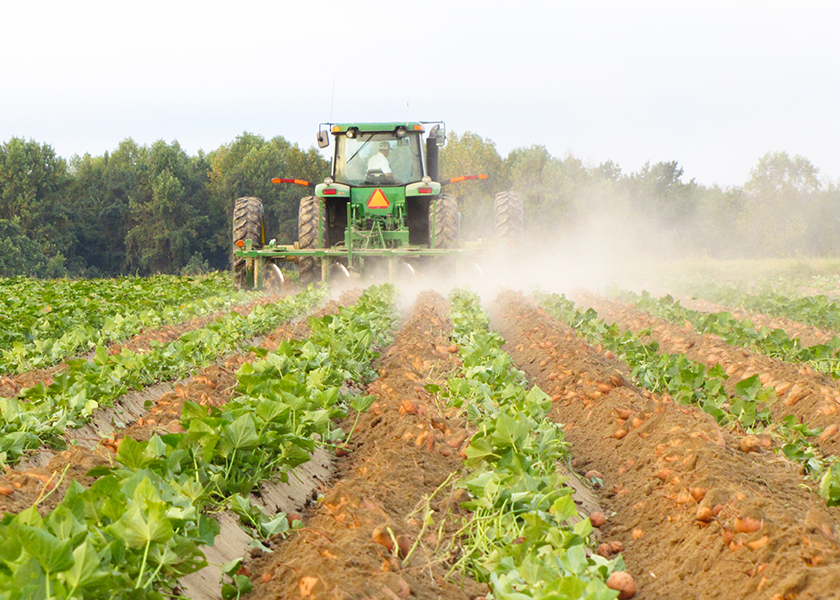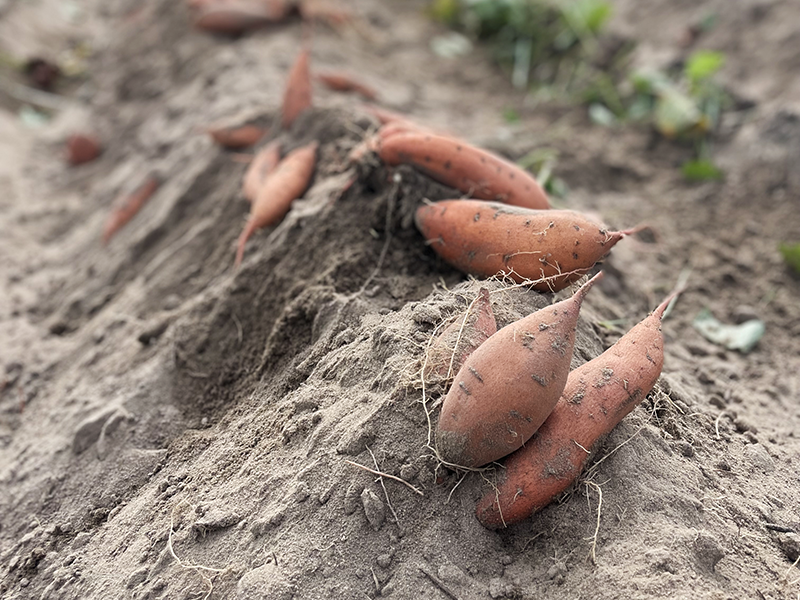Sweetpotato supplies tighten in North Carolina

North Carolina sweetpotato growers are hopeful that a continuing drop in acreage will lead to tighter supplies and stronger markets, as well as help them cope with inflation and skyrocketing costs.
“Everything from packaging to fuel to fertilizer has gone up,” said Jeff Thomas, marketing director for Lucama, N.C.-based Scott Farms.
Meanwhile, sweetpotato prices have stagnated. Unfavorable fob pricing has prompted some growers to transition to more lucrative crops, like tobacco, soybeans, peanuts, cotton or corn, he said.
North Carolina sweetpotato acreage dropped from about 105,000 acres in 2021 to 84,000 acres in 2022, according to USDA. Some growers expect to see another 20% drop this year, and they hope that dip in availability will nudge prices upward.
One result of the acreage cutback appears to be in evidence already.
Some suppliers have exhausted their storage crop and have begun shipping their new crop, Thomas said. That’s something that sometimes doesn’t happen until late October.
Sweetpotato growers also are facing increased competition from growers in South Africa and Egypt, said Jacy Barnes, who handles marketing for Spring Hope, N.C.-based Farm Pak/Barnes Farming. Buyers in Europe may look to those sources rather than the U.S., she said.
Some U.S. sweetpotato shippers rely on exports for a large part of their business.
“It’s almost impossible for us to compete with them on pricing,” Barnes said.

This year’s North Carolina sweetpotato harvest got off to a slow start in many areas because of cool weather and rain. But digging was ramping up by the second half of September and was expected to continue until late October or, in some cases, into mid-November.
Growers seemed pleased with their crops despite a generally dry summer.
“The quality of the crop looks really good,” said Robin Narron, marketing director and sales support for Nash Produce, Nashville, N.C.
“The skin looks really good,” she said. Size and yields were about average.
Nash Produce offers covington, organic covington, murasaki and bonita varieties.
The company is working to introduce some sustainable pack options, she added, like cardboard and compostable packaging.
Barnes also was pleased with the sweetpotato crop at Farm Pak/Barnes Farming.
“Quality is looking good so far,” she said in late September.
A member of the grower’s third-generation, Barnes joined her brother, Josh, who works in operations at the company, in April. She also assists sales manager Jose “Pepe” Calderon.
The company offers covington, murasaki and a few purple- and red-skin sweetpotato varieties.
Although a mix of sweetpotatoes should be available this year, Barnes said fewer jumbos likely will be on supermarket shelves compared to last season.
Farm Pak/Barnes Farming now offers 2-, 3- and 5-pound consumer bags of sweetpotatoes, a 1.5-pound microwaveable bag and individually wrapped microwaveable sweetpotatoes.
Growers say they’re seeing increased year-round demand for sweetpotatoes from consumers and the foodservice industry.
“The foodservice industry has turned sweetpotatoes on their ear,” Thomas said.
And they’re presenting the spuds in interesting ways — not just baked or as side dishes. Thomas has seen sweetpotatoes in “everything from cocktails to desserts” in restaurants, he said. And they’re being featured in the center of the plate.
He estimated that 50% of Scott Farms’ domestic business is custom packed — often by count — for foodservice.

Narron of Nash Produce said she also sees more sweetpotato options in restaurants, including a menu item featuring three different varieties of roasted sweetpotatoes in one dish.
“It was nice to see restaurants incorporating other varieties of sweetpotatoes,” she said.
Consumers are looking at new ways to use sweetpotatoes at home as well, Thomas said.
Scott Farms’ offerings include a steamable bag, 1.5-pound microwaveable bags, 8-ounce single-serve microwaveable sweetpotatoes and 3-pound bags.
“Sweetpotatoes are being integrated into more a staple item than a specialty,” he said. “People definitely have sweetpotatoes on their shopping lists.”
The company sells covington, purple and murasaki sweetpotatoes.
Narron said consumer packs account for 25% of the sweetpotatoes that Nash Produce sells.
The company offers 3- and 5-pound mesh bags of conventional and organic covington sweetpotatoes, bagged murasaki, a four-pack tray, a steamable bag and individual microwaveable sweetpotatoes.
“The industry has worked hard pushing sweetpotatoes as a year-round commodity, not just something served at Thanksgiving,” Narron said. “The health benefits of sweetpotatoes are phenomenal.”







